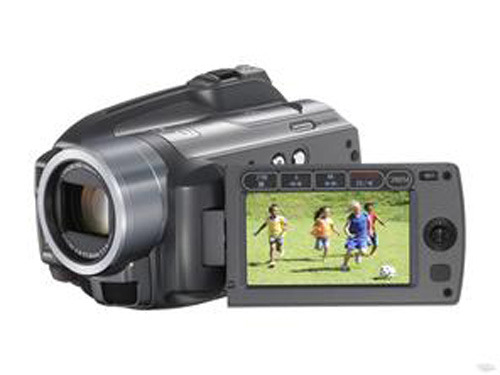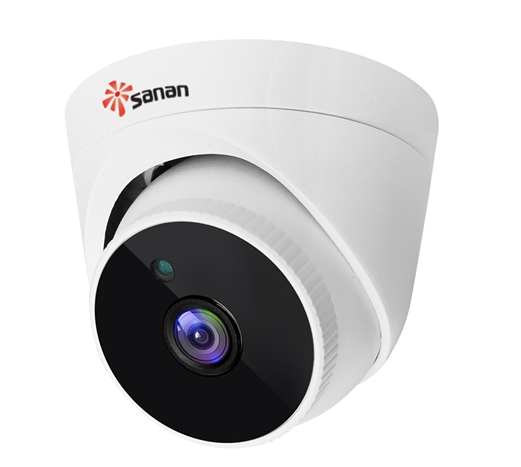
With the promotion of safe cities and other projects, the domestic security field has developed rapidly in recent years and has maintained an annual growth rate of 20% in the past few years. Video surveillance has also emerged as the core of security. Compared with traditional analog surveillance, digital surveillance is becoming increasingly prominent in video surveillance due to its high-quality images, convenient transmission, and management. At the same time, digital surveillance poses challenges to all aspects of video surveillance systems.
The video surveillance system can generally be divided into collection, transmission, storage display and control system parts. With the trend of video digitization and high-definition, the amount of video data has increased by leaps and bounds, placing higher requirements on storage, mainly in the following aspects:
1. capacity
The storage capacity requirements in general video surveillance need to consider the single video stream bit rate, the number of video streams that can be accessed at the same time, and the period that the video needs to be reserved. Due to the popularity of high-definition cameras, the single-channel video stream code rate has been greatly improved, and the storage capacity of video surveillance equipment, especially equipment with a large number of cameras, has also risen. Under the condition that the maximum capacity of a single disk of a disk is certain, video surveillance storage devices are required to have the ability to connect more local disks and disk cabinet expansion ports.
2. speed
Video storage needs to take into account both the local storage of the video stream to the local disk and the reading of historical video data from the disk for playback display. With the continuous improvement of the video bit rate, the access speed requirements of video storage systems have also been greatly improved.
3. redundancy
In today's video surveillance market, RAID redundancy support has become the standard for mid-to-high-end video surveillance devices, and more and more mid- to low-end products are beginning to support this feature. There are two implementations of RAID in general video surveillance devices: hardware RAID cards and software RAID (such as Linux SoftRAID). The former performs better, but the cost is higher; the latter does not require hardware costs but is limited by the CPU's computing power, and usually has lower performance. Some processor platforms support RAID hardware acceleration engines, which can provide acceleration for software RAID stacks, and greatly increase software RAID performance without increasing hardware costs. This is a very suitable RAID solution.
The video surveillance storage device solution includes a highly integrated embedded solution and a high-end solution based on the x86 architecture. In the traditional embedded solution, the highly integrated SoC has a series of functions such as network access, audio and video decoding, and back-end SATA port access. Device manufacturers can use a single chip to construct low-end video surveillance storage products. However, the disadvantages are that the CPU processing capability is not strong and the number of back-end access ports is limited. If the device manufacturer wants to access more storage disks or add RAID redundancy, it must add a SATA controller or a RAID controller card. In the high-end video surveillance solution based on the x86 architecture, SATA controllers must be added because of the limited number of back-end access ports, and SAS HBA control cards are required if disk cabinet expansion is required. The video surveillance solution based on the x86 architecture has the highest performance, but its cost is also very expensive. Only a few high-end products in the market use such solutions.
Is there a video storage solution that can balance storage performance and cost? The answer is yes. PMC, as a traditional memory chip manufacturer, has occupied most of the enterprise-class memory chip market. Its SAS/SATA controllers and expander chips are widely used by major server and storage product manufacturers such as HP, IBM, EMC, and Netapp. The deep accumulation in the storage industry and technology has made it a great achievement in video surveillance storage solutions. For example, the newly introduced embedded SoC solution from PMC has a high-performance multi-core processor based on a linux system to run client applications, up to 24 ports of local SAS/SATA ports for local disk connections or expansion disk enclosure connections, and enterprise RAID hardware. The acceleration engine can seamlessly interface with the Linux SoftRAID stack to provide efficient RAID processing capabilities. The PCIe port can be connected to PCIe devices such as network chips. Customers can connect to a network chip to build a complete end-to-end video storage solution that perfectly balances performance, cost, and power requirements. The system has been adopted by the leading security equipment company in China and has received favorable comments from customers.
AHD is an over-coaxial-cable analog HD video transmission standard, allowing long-distance HD transmission at a lower cost to meet the requirements for a complex and large installation.
IR Eyeball Camera Another name including:Dahua Ir Eyeball Camera,Dahua Eyeball Camera,Eyeball Camera Vs Dome,Eyeball Camera System,CCTV camera, Analog CCTV Camera , Analog Cctv

IR Eyeball Camera
Dahua Ir Eyeball Camera,Dahua Eyeball Camera,Eyeball Camera Vs Dome,Eyeball Camera System
Shenzhen Sanan Technology CO.,LTD , https://www.sanan-cctv.com